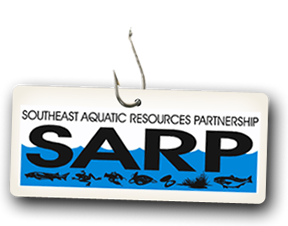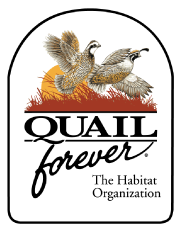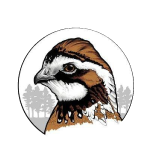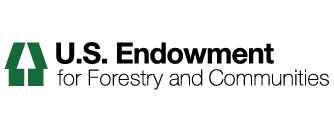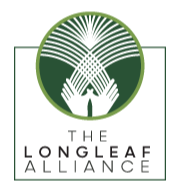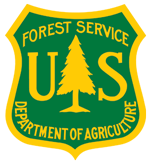Videos
Enhancing the Climate Resilience of America’s Natural Resources
The President's Climate and Natural Resources Priority Agenda is the result of an interagency process to inventory and assess current policies, programs, and regulations related to climate change adaptation. The Agenda builds upon the robust climate change adaptation work already accomplished by Federal agencies and identifies significant actions moving forward. It specifically mentions how Federal agencies working to address ecosystem management issues through LCCs and other multi-stakeholder bodies will work with partners to select flagship geographic regions for which they will identify priority areas for conservation, restoration, or other investments to build resilience in vulnerable regions, enhance carbon storage capacity, and support management needs. Within 24 months, these agencies and their partners will have identified and mapped the initial list of priority areas within each of the selected geographic landscapes or regions.
Climate Webinar: Exploring Snowfall in the United States
The number of snowfall events in a given area has a large impact on road maintenance and water resources management. Snowfall data collected in the United States between 1930 and 2007 at seven locations shows how snowfall frequency has changed over time, and relates the information to a changing global climate.
Harpeth River Restoration
As part of a jointly funded project via the National Fish Passage Program, the totality of this project is removing a lowhead dam and restoring the immediate area to riffle/run habitat for the benefit of improved water quality and native fish habitat in the Harpeth River, TN. (Photo: Harpeth River Restoration)
Science Applications: Fostering Science Excellence for the Service
This video answers two questions: 1. What does the Science Applications program work on and; 2. Why is it important to the public and the staff of the U.S. Fish and Wildlife Service.
GIS & Conservation Planning Portal Overview
Dr. Paul Leonard provides a general overview of the GIS & Conservation Planning section within the Appalachian LCC Web Portal.
Webinar: Audio and Video from July Core Team Meeting
Recording of the morning Connecticut River Pilot Core Team Meeting on July 25, 2014.
Interviews with Core Team members about Process
Video interviews with members of the Connecticut River Pilot Core Team about the Landscape Conservation Design process
Agenda: Connecticut River Pilot Core Team Meeting 06-27-2014
Agenda, Handouts and Presentation for June 27, Core Team Meeting in Hadley, Massachusetts from 10:00 a.m. to 2:00 p.m.
Putting the Nation on a Path for Climate Resilience and Preparedness: NOAA's Information and Expertise
Information seekers can turn to NOAA personnel on the ground to access and apply available information to specific questions and needs. NOAA provides a wide range of climate information through monthly, seasonal and decade forecasts and data tailored to the specific needs of different sectors. NOAA uses this same information to take direct action to increase the resilience and facilitate adaptation of the nation’s valuable marine and coastal resources and the people that depend on them.
Conservation Planning Process
Conservation planning identifies and prioritizes lands that encompass important natural or cultural resources across the landscape (e.g., critical watersheds, habitat for rare or threatened species) and develops protection and management strategies for these lands. It is a process where science is at the core of planning, but the science is informed by groups of stakeholders using their on-the-ground knowledge and expertise. Dr. Robert Baldwin of Clemson University explains in this video the steps involved in the conservation planning process.
Conservation Planning Webinars
Pre-recorded video presentations representing a broad range of planning topics
Classification and Mapping of Cave and Karst Resources
It has been recognized by the Appalachian LCC partnership that to develop and deliver landscape-level planning tools, it is essential to develop an Appalachian-wide map depicting where cave and karst habitats and resources occur across the landscape. For the past 18 months, researchers for the Appalachian LCC funded “Classification and Georeferencing Cave/Karst Resources across the Appalachian LCC” project have been gathering and analyzing data on caves and karst region wide. This work has produced a series of deliverables, including narratives, data tables, geospatial information layers, and a variety of maps. The maps and files provide a comprehensive overview of data availability for examining relationships between environmental factors and biological diversity and distribution within karst areas of the Appalachian LCC.
Appalachian LCC and Eastern Brook Trout Joint Venture Project Overviews
In this video, Jason Coombs of the University of Massachusetts gives a brief overview of three current projects taking place with the Appalachian LCC and the Eastern Brook Trout Joint Venture. These include web-based tools and viewers such as the Riparian Restoration Prioritization to Promote Climate Change Resilience tool that will be posted on the Appalachian LCC Web Portal when completed. Coombs also provided an update on the Eastern Brook Trout habitat patch layer.
Habitat Assessment Models and Decision Support Tools for Aquatic Habitats
Fritz Boettner of Downstream Strategies presents on the North Atlantic LCC funded project to develop a decision support tool for an aquatic assessment of the Northeast. The presentation focuses on the development of a modeling methodology, process and outputs that came out of the modeling, and how stakeholders are needed for the project to be a success and develop quality assessment outputs.
Data Sharing and the AppLCC Web Portal
Video Presentation by Appalachian LCC GIS Specialist Paul Leonard that describes the vision and functionality of the AppLCC web portal in regards to sharing and visualizing data.
Conservation Planning
Conservation planning identifies and prioritizes lands that encompass important natural or cultural resources across the landscape (e.g., critical watersheds, habitat for rare or threatened species) and develops protection and management strategies for these lands. It is a process where science is at the core of planning, but the science is informed by groups of stakeholders using their on-the-ground knowledge and expertise.
South Atlantic LCC Natural Resource Indicator Process
Rua Mordecia, Science Coordinator with the South Atlantic LCC, provide an overview of the process the South Atlantic LCC took to identify Natural Resource Indicators.
Assessing Regional Connectivity in Current and Future Landscapes
Connectivity among conservation reserves has long been recognized as necessary for long-term persistence of populations and continued evolution in anthropogenically-dominated landscapes.





